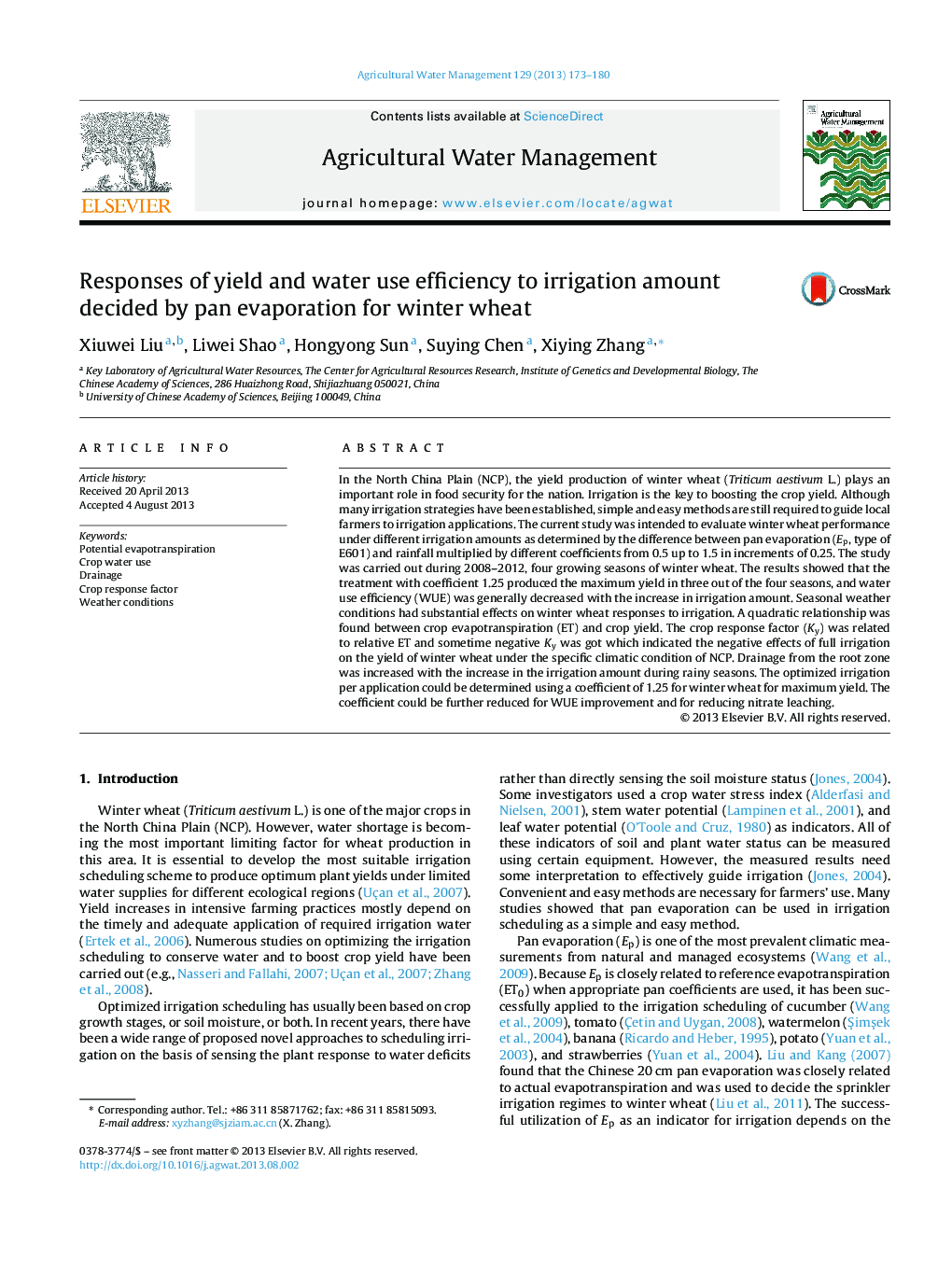| Article ID | Journal | Published Year | Pages | File Type |
|---|---|---|---|---|
| 6364063 | Agricultural Water Management | 2013 | 8 Pages |
Abstract
In the North China Plain (NCP), the yield production of winter wheat (Triticum aestivum L.) plays an important role in food security for the nation. Irrigation is the key to boosting the crop yield. Although many irrigation strategies have been established, simple and easy methods are still required to guide local farmers to irrigation applications. The current study was intended to evaluate winter wheat performance under different irrigation amounts as determined by the difference between pan evaporation (Ep, type of E601) and rainfall multiplied by different coefficients from 0.5 up to 1.5 in increments of 0.25. The study was carried out during 2008-2012, four growing seasons of winter wheat. The results showed that the treatment with coefficient 1.25 produced the maximum yield in three out of the four seasons, and water use efficiency (WUE) was generally decreased with the increase in irrigation amount. Seasonal weather conditions had substantial effects on winter wheat responses to irrigation. A quadratic relationship was found between crop evapotranspiration (ET) and crop yield. The crop response factor (Ky) was related to relative ET and sometime negative Ky was got which indicated the negative effects of full irrigation on the yield of winter wheat under the specific climatic condition of NCP. Drainage from the root zone was increased with the increase in the irrigation amount during rainy seasons. The optimized irrigation per application could be determined using a coefficient of 1.25 for winter wheat for maximum yield. The coefficient could be further reduced for WUE improvement and for reducing nitrate leaching.
Related Topics
Life Sciences
Agricultural and Biological Sciences
Agronomy and Crop Science
Authors
Xiuwei Liu, Liwei Shao, Hongyong Sun, Suying Chen, Xiying Zhang,
